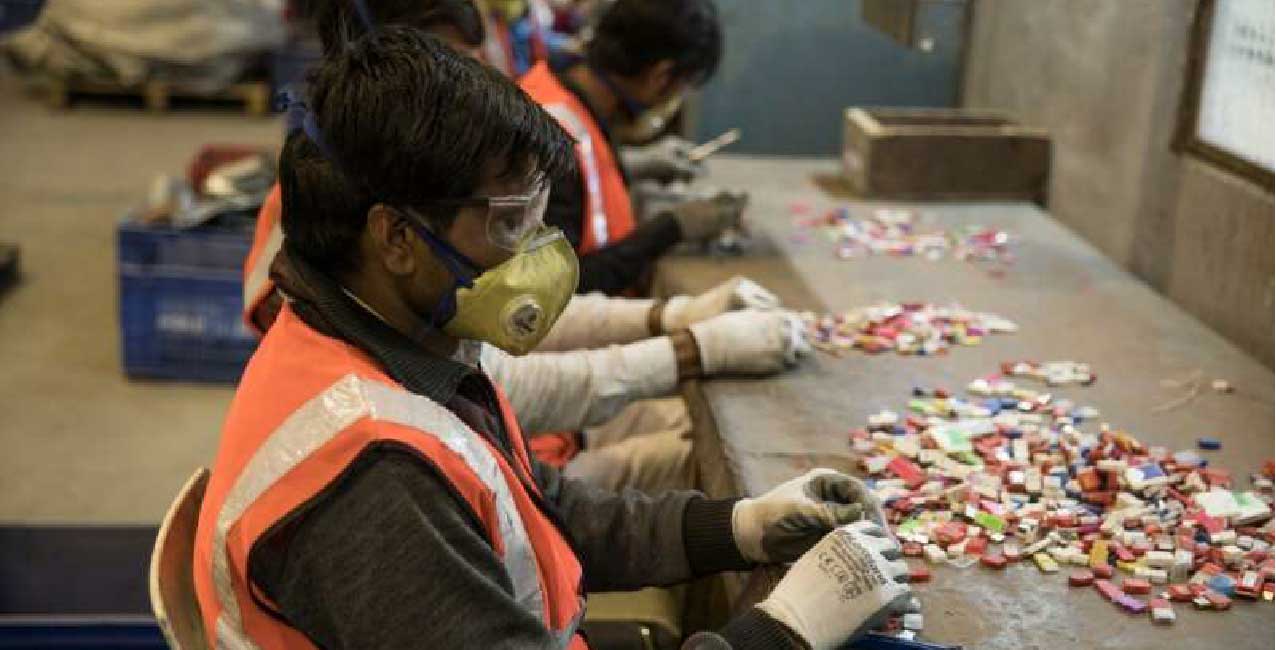- Empty cart.
- Continue Shopping
India recycles 90% of its PET waste- sets example for others to follow

The entire Indian cricket team’s apparel for the 2015 world cup was made from recycled PET bottles! Even their current jersey is made from this material.
India is turning waste into an opportunity by recycling 90% of its PET waste, higher than Japan and Europe who recycle around 72% and 48% of its discarded PET. The PET bottle recycling in India is a whopping INR 3500 crore industry now.
According to a report by the Council of Scientific and Industrial Research (CSIR) – National Chemical Laboratory (NCL), following a year-long study, out of the 900 kilotonnes of plastic produced in Indian annually, around 65% is recycled at registered facilities, 15% is recycled in unorganized sectors and 10% is reused in households and the rest ends up in landfills.
We are proud to say that we at EcoRight will be launching our range of recycled plastic bottle bags in the next 3 months!
Understanding PET
PET, short for polyethylene terephthalate is the chemical name for polyester. It is widely used for packaging foods and beverages, especially water and soft drinks. The bottle of water you purchase is basically PET.
In India, PET recycling is a huge business, profiting everyone right from the scrap collector to the recycling units. Waste collectors get around 14-15 Rs/kg for discarded bottles. These waste bottles are bought by kabadiwallas or traders who employ people to sort and segregate the waste which is further sold to large vendors or recyclers.
PET recycling
PET is 100% recyclable. PET can be recycled and recovered by washing and remelting or chemically breaking it down to make new PET bottles. Contaminated PET that is too dirty to be recycled is burned as an energy source. This is called ‘thermal recycling’.
Labels, neck rings, and caps are removed from the discarded bottles and the bottles are then shredded, washed and sold as washed flakes. These washed flakes are used to make polyester fiber.
The recycled PET is used in a variety of new products. It is used to make new PET bottles, containers, felt for tennis balls and tennis ball canisters, making automotive parts such as door panels, bumpers, and headliners, construction materials, fabric from fleece jackets or t-shirts, fillers in cushions, winter coats and blankets, sleeping bags and thermoformed packaging.
Source: http://www.petrecycling.in/
It is remarkable what India is doing with the recycling of PET. But PET is not the only widely used plastic. High-density polyethylenes (HDP) used for making liquid soap and shampoo bottles and Polystrene (PS) used in food packaging and food containers are major contributors to plastic waste.
India still has a long way when it comes to recycling of other plastics that generate copious amounts of waste.
Learn how India is trying to ban single-use plastics.






